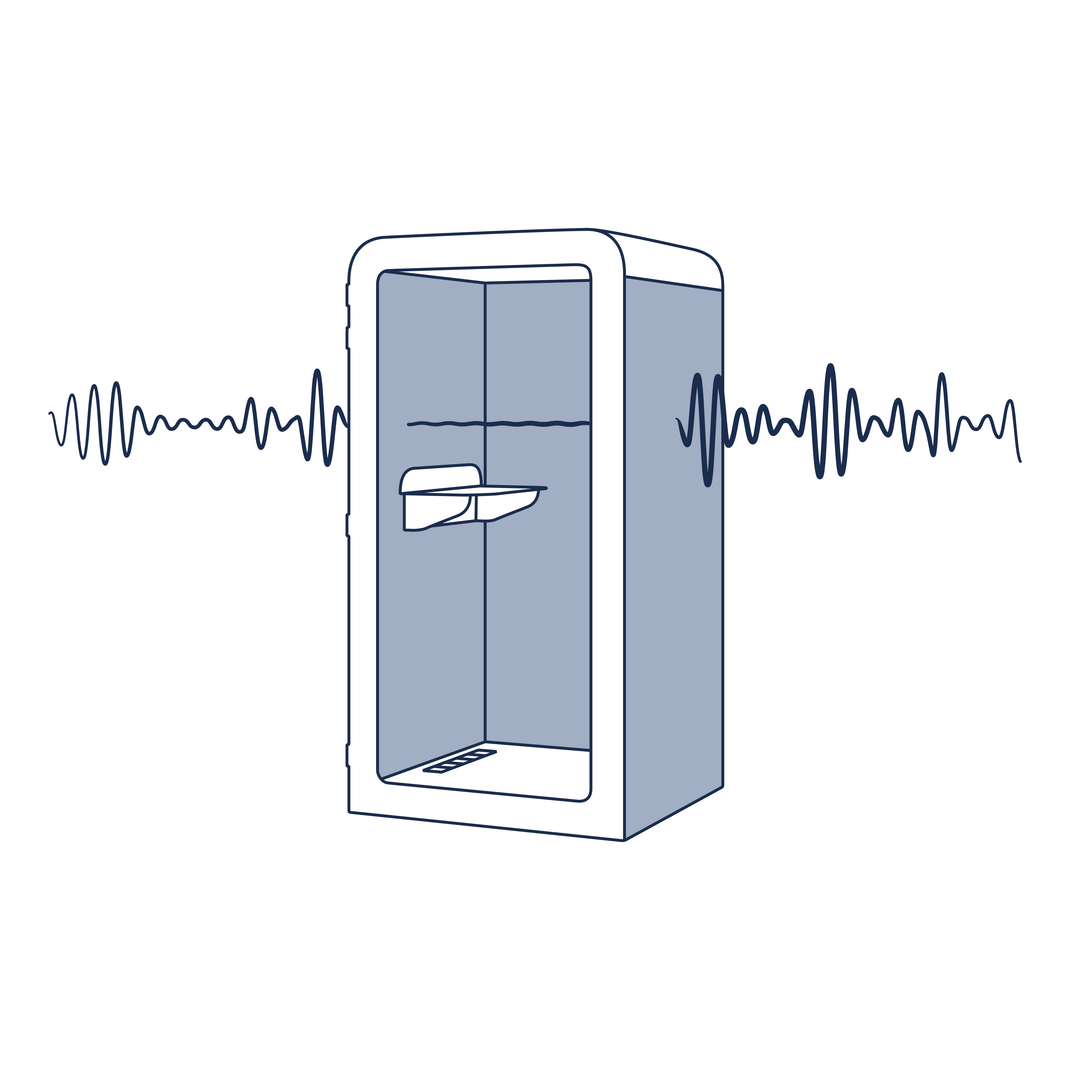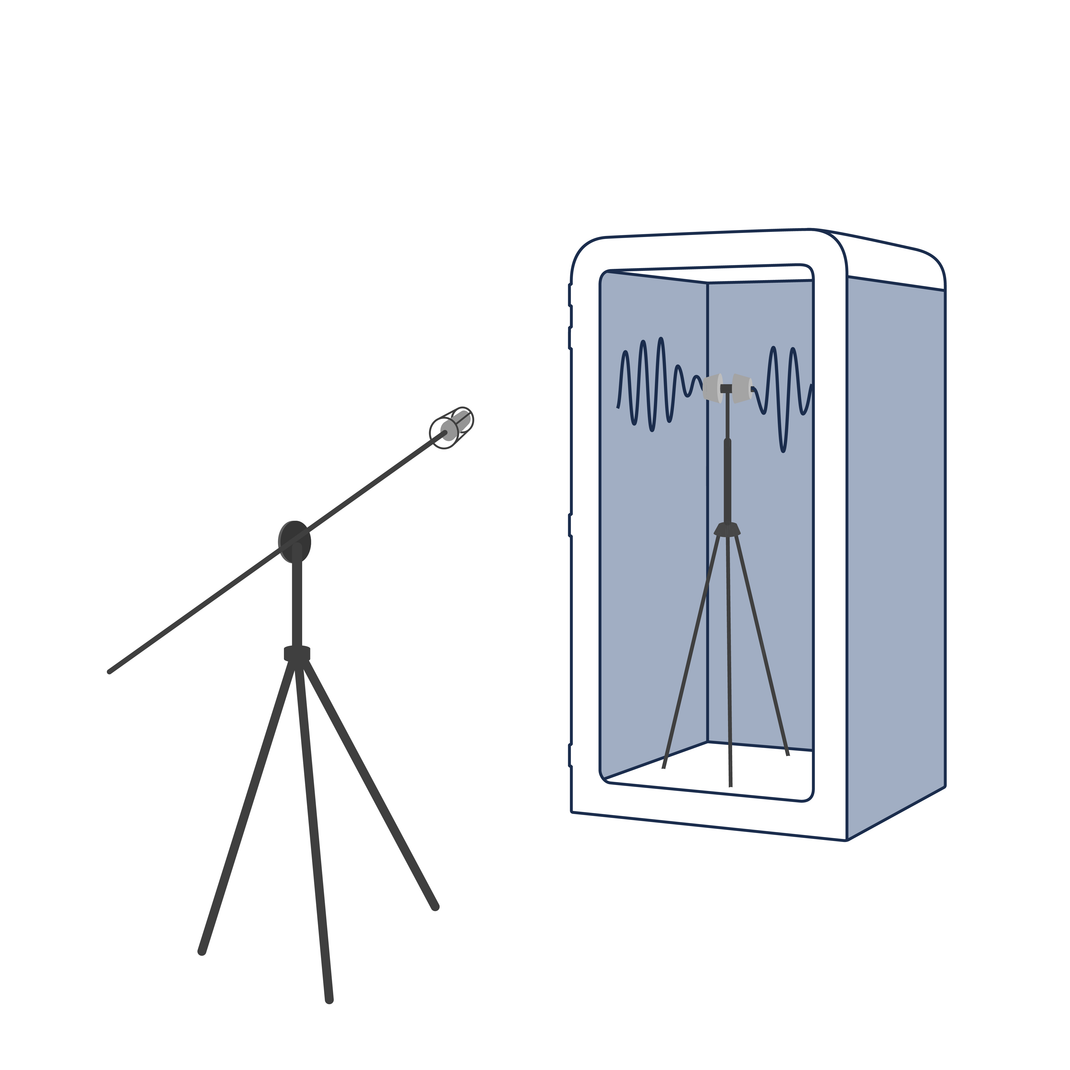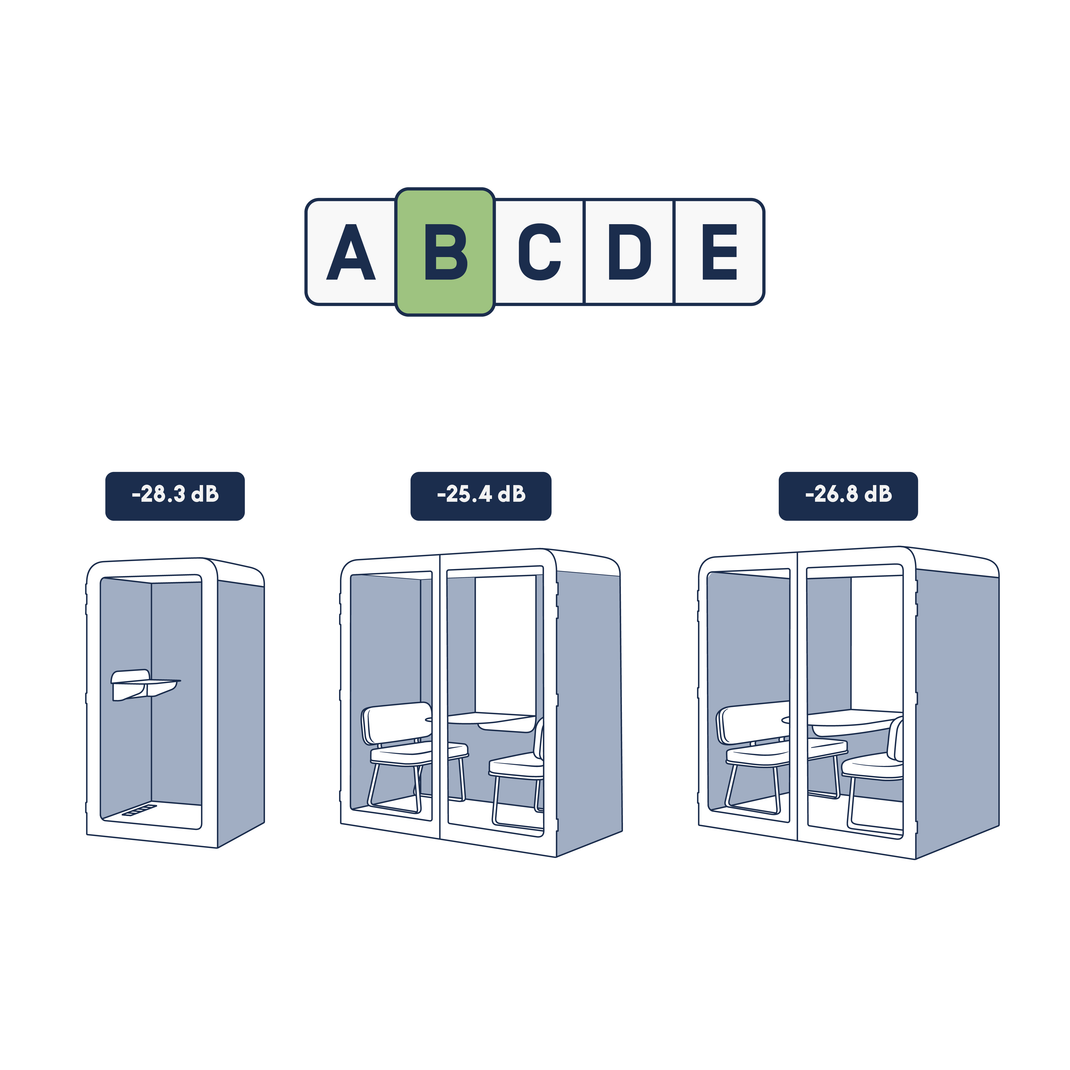Acoustic standard and soundproofing
Do you want to create an environment where your employees can concentrate on their work without being disturbed by ambient noise? Soundproofing your workspaces is a crucial step in achieving this goal.
Understanding the ISO 23 351 certification
Existing standards.
Standardisation of the evaluation of furniture sets and acoustic enclosures. The ISO 23 351 certification for easy comparison.
The purpose of this standard is to establish a test that can be applied to all products in the acoustic insulation market. This market is very large and has several characteristics. Therefore, it was necessary to subject all these products to the same test protocol in order to allow an effective comparison of the different solutions aimed at the same objective: the reduction of speech in an acoustic booth.
The ISO 23 351 certification has been the reference since 2020, replacing previously used standards such as ISO 10140-2, ISO 16283-1, ISO 10052, ISO 11546-1 and ISO 11957.

Definition
The ISO 23 351 certification is a technical document that sets out the criteria for evaluating the effectiveness of acoustic enclosures in terms of soundproofing.
It takes into account a number of factors to ensure optimum performance of the booths in terms of noise reduction. These include the acoustic pressure level, which measures the amount of noise inside and outside the enclosure, and the acoustic attenuation index, which measures the ability of the enclosure to attenuate external noise.

Performance calculation
The ideal acoustic booth is one that meets class A or B of the standard.
The ISO 23 351 certification classifies acoustic booths into different categories based on their acoustic performance, from A+ to E. This classification allows users to choose the most suitable booth for their acoustic needs, depending on the working environment and ambient noise level.
Based on our studies and experiments, we have decided to classify our cabins in category B.
This classification offers the best compromise between optimal acoustics tailored to your needs, a comfortable interior and efficient ventilation. Class A booths, while offering superior acoustic quality, are less mobile due to their larger size and are often much more expensive.

-28 dB, what does that mean?
Our booths allow you to move from a noisy classroom to a quiet office.
Firstly, it's important to understand that the decibel scale is logarithmic, not linear. For example, an increase of 3 decibels results in a doubling of sound intensity.
With a reduction of 28 dB, our booths allow you to go from a noisy environment of around 70 dB (noisy classroom, noisy open space) to a quiet environment of 40 dB (quiet office, quiet library).
Acoustic booth soundproofing benefits
Improved focus and productivity
Acoustic booths are the ideal solution for businesses to effectively reduce noise in open spaces, creating a calm and conducive working environment for better concentration. This atmosphere promotes increased employee productivity as they are able to focus on their tasks in a calm and distraction free environment.
Employee wellbeing and job satisfaction
Create a quiet working environment that reduces stress and promotes better work quality and performance.
Adaptability to different environments and needs
Acoustic booths are adaptable to a wide range of professional environments, from modern businesses to traditional industries. Their versatility allows them to meet the specific needs of each sector, significantly improving working conditions.
Enhanced privacy
Acoustic booths provide a private space where employees can have confidential conversations or teleconferences without worrying about being overheard by nearby colleagues.
Sound insulation
Sound propagation & materials
Acoustics is based on simple principles: sound propagates through vibrations in air and materials. In an open space where many people are working together, these vibrations can be reflected and scattered, creating a noisy and disruptive environment.
Several factors can influence the propagation of sound in a workspace, including the arrangement of furniture, the surface of materials present, and even the presence of people. For example, hard surfaces such as concrete or glass tend to reflect sound, while absorbent materials such as rock wool or fabric can dampen it.
Acoustic pressure and damping
Our acoustic enclosures are carefully designed to play a vital role in noise reduction.
The standard sets the benchmark for evaluating the effectiveness of acoustic enclosures in reducing noise. To assess the quality of an acoustic pod, a number of specific characteristics are taken into account, such as the sound pressure and sound attenuation coefficients.
The sound pressure coefficient measures the amount of noise inside and outside the enclosure and is used to determine the effectiveness of the sound insulation. The lower the coefficient, the better the sound insulation of the pod. Similarly, the sound reduction index assesses the pod's ability to attenuate external noise, creating a quieter environment inside. These criteria are essential to ensure optimum sound insulation and a significant reduction in noise in the workspace.
Work With Island,
Manufacturer of islands of serenity for shared spaces
- Delivered and installed by our team
- Made in France and delivered in 2 weeks
- 100-day trial, satisfied or refunded

